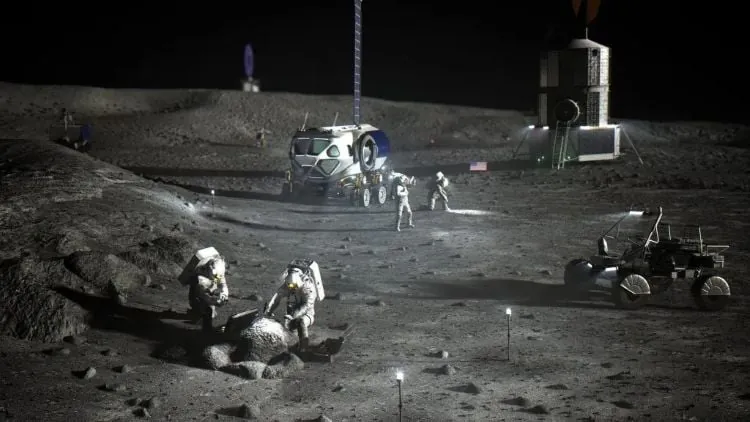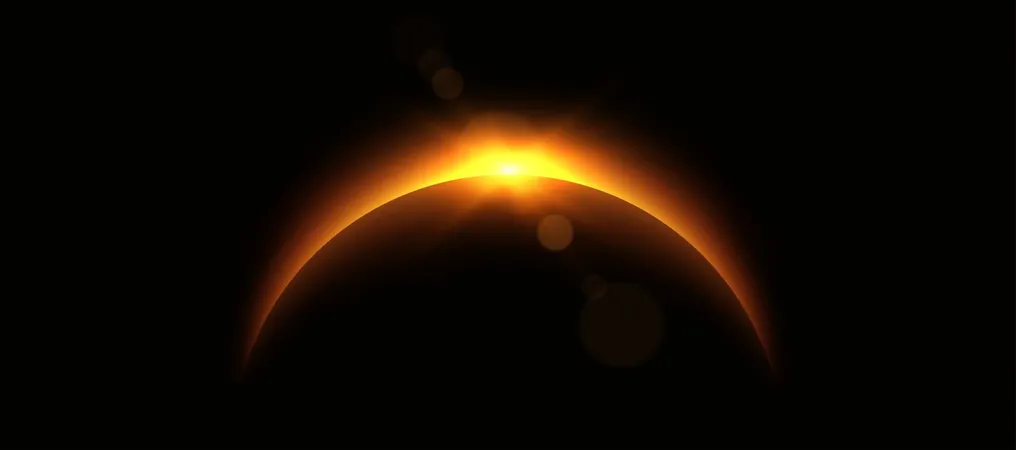
Revolutionizing Lunar Habitats: The Power of Thermoelectric Generators
2025-08-24
Author: Benjamin
Unlocking Lunar Living with Innovative Power Solutions
Researchers from the Republic of Korea are shaking up our understanding of lunar habitats with their latest study on thermoelectric generators (TEGs). Published in *Acta Astronautica*, this research explores how TEGs can enhance power efficiency for habitats on the Moon, potentially paving the way for sustainable human exploration of deep space.
Surviving the Moon's Extreme Conditions
The study marks a groundbreaking analysis of TEG performance under the Moon's extreme temperature swings, which can range from scorching 121°C (250°F) during the day to bone-chilling -133°C (-208°F) at night. Previous theories suggested that such drastic temperature variations could actually boost TEG efficiency by enabling a unique transient-state operation.
A Game-Changer for Power Generation
The research team focused on innovative heat storage systems tailored for the Moon's conditions, testing the effectiveness of a multiple-heat-storage approach. They found that this method could yield a staggering 48.9% increase in power generation, a crucial advancement for long-term lunar habitats.
Powering the Future of Deep Space Exploration
With ambitions like NASA's Artemis program aiming for a sustainable human presence on the Moon, the quest for reliable power sources is more critical than ever. Deep space exploration, especially the establishment of bases on the Moon and Mars, has captured global attention, reinforcing the importance of this research.
Comparing Power Sources: TEGs vs. RTGs
While the study examines other power options, such as Radioisotope Thermoelectric Generators (RTGs), it raises concerns over their long-term viability due to radioactive decay. RTGs have been successfully deployed on Mars rovers and during the Apollo missions, but for enduring lunar settlements, TEGs may outshine their radioactive counterparts.
Looking Ahead: The Future of Lunar Power
NASA is gearing up to incorporate RTGs in its upcoming Dragonfly mission, set for launch in July 2028. The researchers also hint at the potential of solar energy and nuclear reactors as additional power sources, emphasizing the need for diverse energy solutions.
A Leap Towards In Situ Resource Utilization (ISRU)
The breakthrough in TEG efficiency reinforces the concept of in situ resource utilization, where astronauts would harness local resources instead of relying on supplies from Earth. This approach could make sustained lunar habitation significantly more feasible.
The Path Forward: TEGs at the Heart of Lunar Habitats
As we forge ahead into an era of deep space exploration, studies like this highlight our growing interest in adapting terrestrial technology for extraterrestrial use. Could thermoelectric generators be the key to unlocking the future of lunar habitats? Only time will tell, and the scientific community is excited to find out!
Keeping the Dream Alive: The Future of Science on the Moon
With a blend of innovation and determination, humanity is on the brink of establishing itself beyond Earth. Let's keep our eyes on the stars and continue pushing the boundaries of science!









 Brasil (PT)
Brasil (PT)
 Canada (EN)
Canada (EN)
 Chile (ES)
Chile (ES)
 Česko (CS)
Česko (CS)
 대한민국 (KO)
대한민국 (KO)
 España (ES)
España (ES)
 France (FR)
France (FR)
 Hong Kong (EN)
Hong Kong (EN)
 Italia (IT)
Italia (IT)
 日本 (JA)
日本 (JA)
 Magyarország (HU)
Magyarország (HU)
 Norge (NO)
Norge (NO)
 Polska (PL)
Polska (PL)
 Schweiz (DE)
Schweiz (DE)
 Singapore (EN)
Singapore (EN)
 Sverige (SV)
Sverige (SV)
 Suomi (FI)
Suomi (FI)
 Türkiye (TR)
Türkiye (TR)
 الإمارات العربية المتحدة (AR)
الإمارات العربية المتحدة (AR)